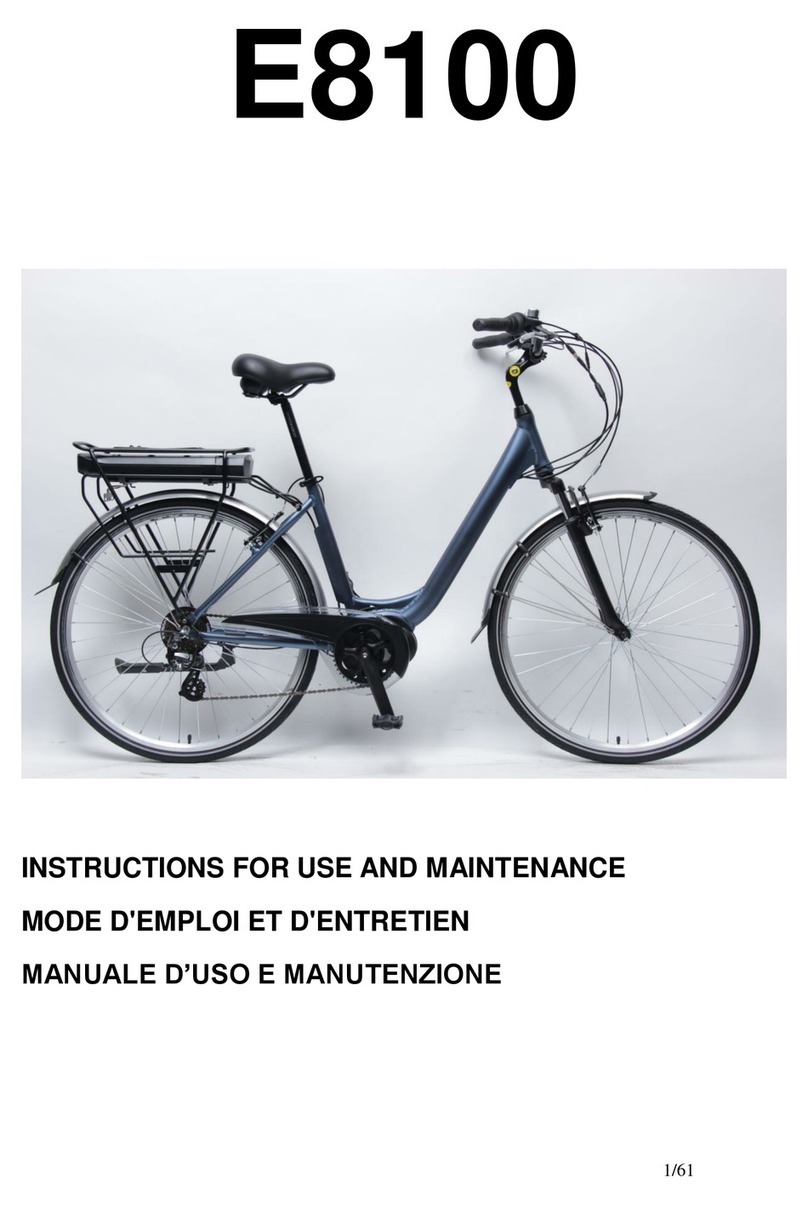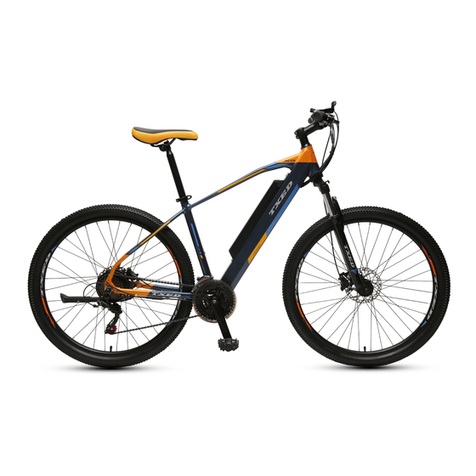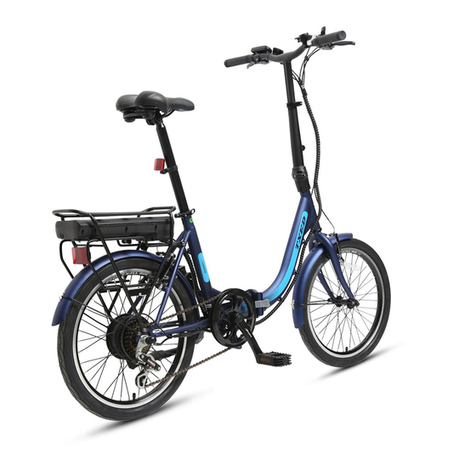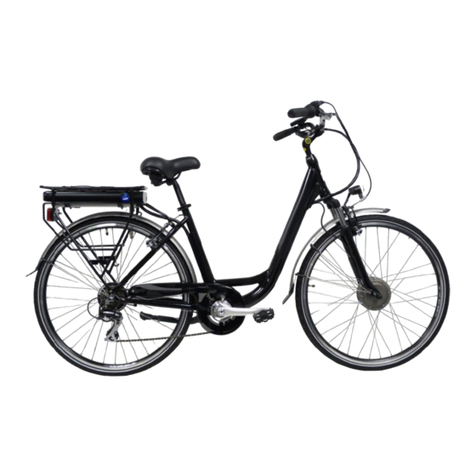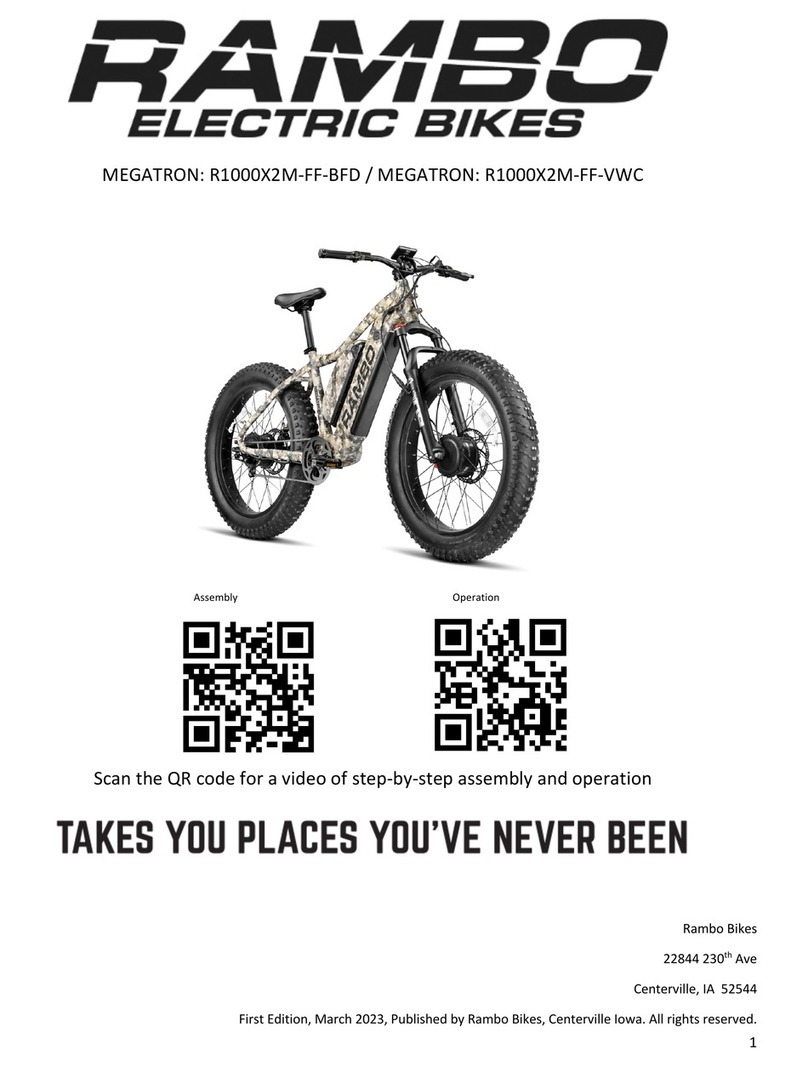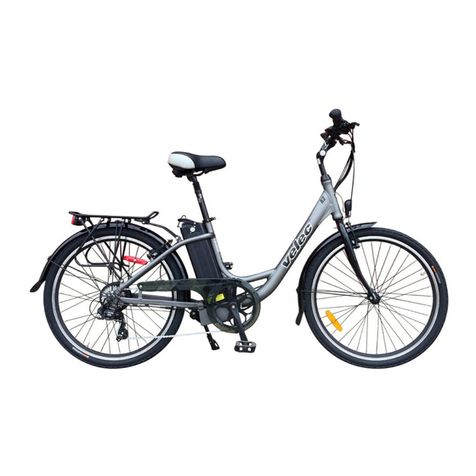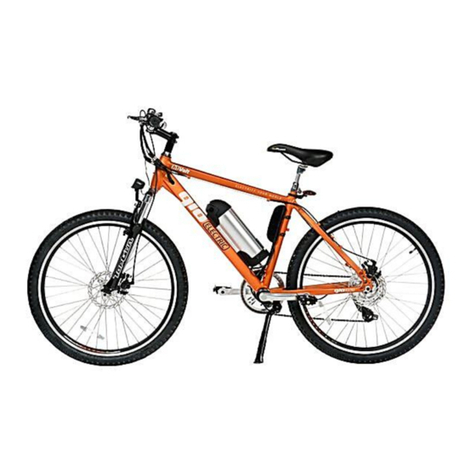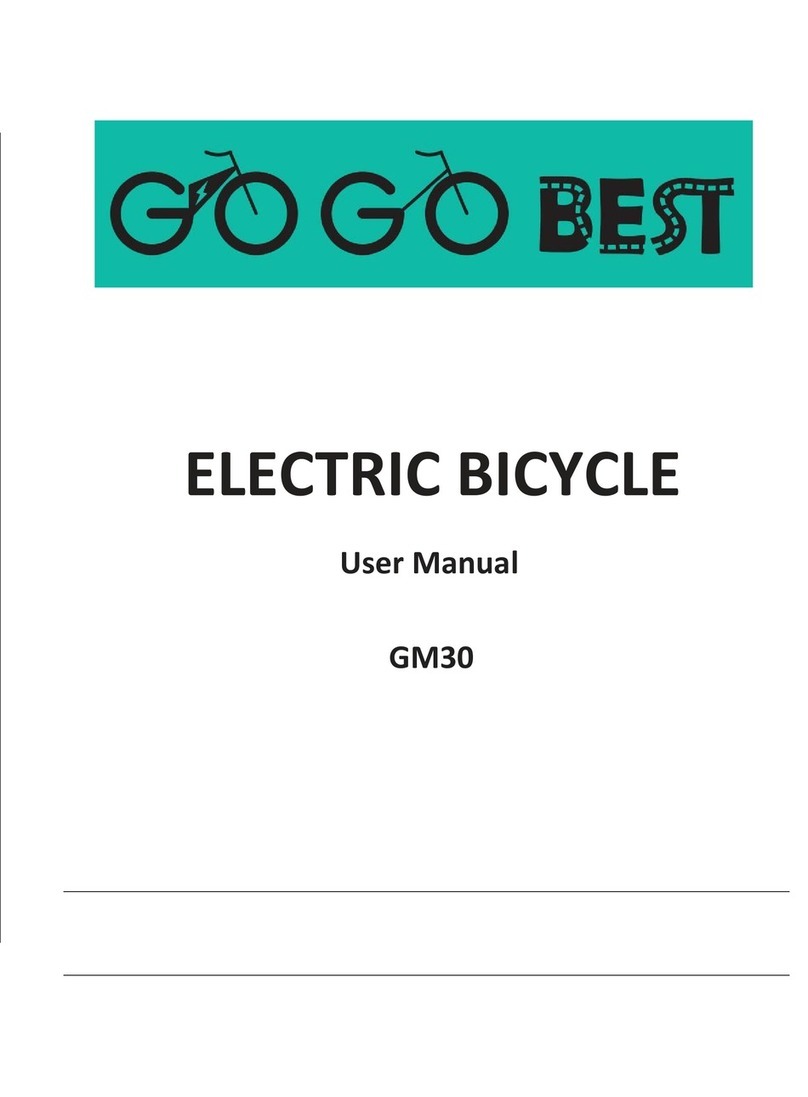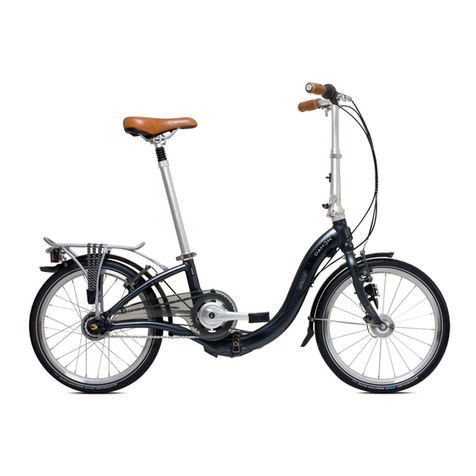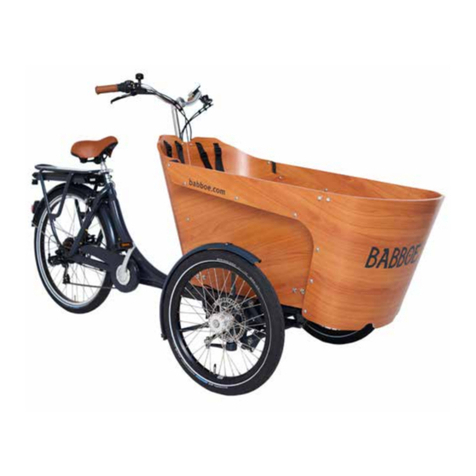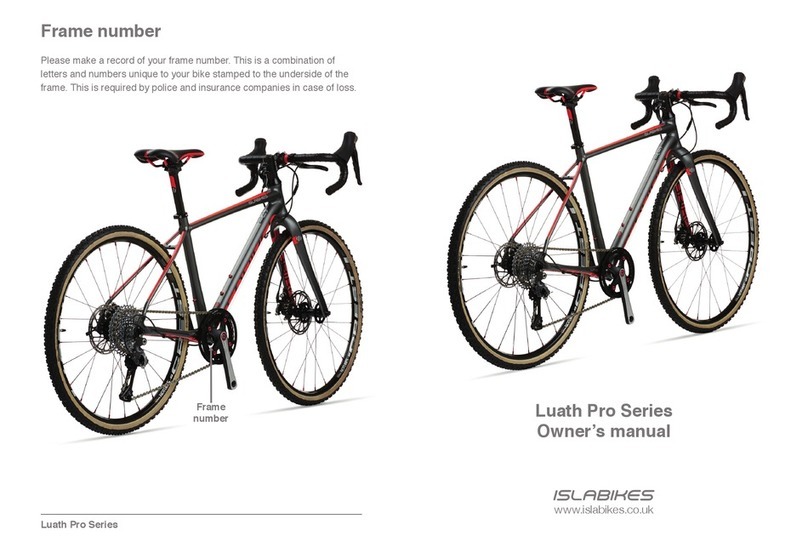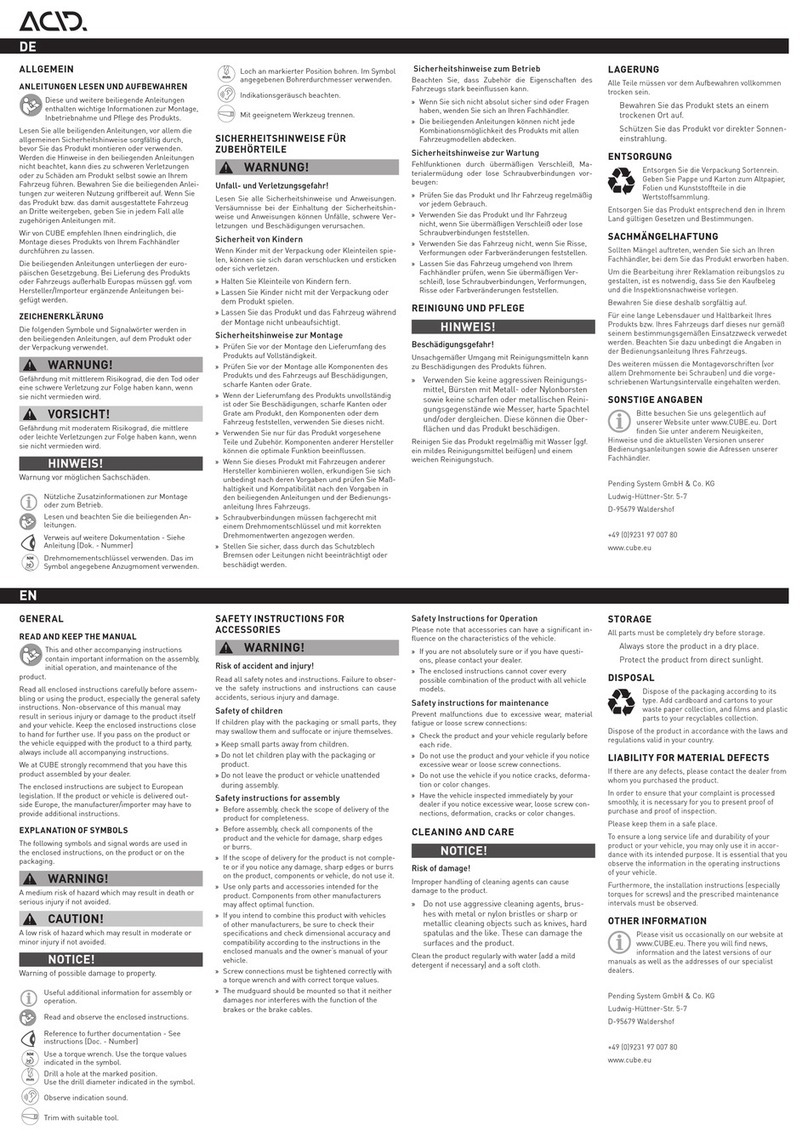1
MOD :E-BIKE 7000
ENGLISH
Congratulations for purchasing this pedal assisted electric bicycle, carefully designed and manufactured by following the latest international
quality standards, including:
EN 14764-2005
EN 15194-2009
Please read this instruction manual carefully before use.
This manual contains important information on the safety and maintenance of the bicycle.
It is the purchaser’s responsibility to read this manual before use.
In the event that the original components should have production defects within the expiration of the warranty period, the manufacturer will
replace them. The warranty duration for electric bicycles is the following:
Frames and Forks: 2 years
Electrical components: 1 year
Other components: 1 year, except for tyres, inner tubes and accessories that are subject to wear.
The company assumes no liability for indirect or special damages. This warranty applies only to the original purchaser, in the possession of a
fiscal document proving the exact purchase date.
This warranty is applicable only in the case of defective components and does not cover the effects of normal use or damage caused by
accidents, abuse, excessive loading, negligence, improper assembly, improper maintenance or adding objects that are inconsistent with the
normal use of the bicycle.
No bicycle is indestructible and no claims are accepted for damage caused by improper use, by use in competitions, acrobatics, jumps, leaps or
similar activities. Claims must be made at the retailer, where the bicycle was purchased.
This warranty has no effect on your rights by law.
The company reserves the right to change or correct any specification without notice. All information and specifications in this manual are
correct at the time of printing.
I. Terms and conditions for using this pedal assisted electric bicycle
This pedal assisted electric bicycle is designed to be used on the road or on paved surfaces where the tyres do not lose contact with the ground. It
must be maintained according to the instructions in this booklet
The maximum weight of the cyclist including the load must be less than 100 kg.
Safety:
Before starting to use the pedal assisted electric bicycle, make sure it is completely safe.
Specifically check:
- nuts, bolts, fasteners, and that all components to be fixed on are tightened and are not worn or damaged
- the steering position is comfortable
- the brakes work effectively
- the steering is free without too much play
- the tyres are not damaged and are inflated to the correct pressure
- the pedals are screwed correctly onto the crankarms
PLEASE NOTE: Your pedal assisted electric bicycle should be professionally checked every six months to ensure correct and safe
functioning. It is the user’s responsibility to ensure all components are able to guarantee correct functioning. It is very important to check the
tyres monthly and control the wear line and, if the groove becomes invisible, the tyre is no longer working safely. Aparticularly worn tyre is very
dangerous and must be replaced. Adjust the brake pads at a 1-1.5mm distance from the rim.
FREQUENTLY CHECK THE TENSION OF THE SPOKES OF THE WHEEL DRIVE.
